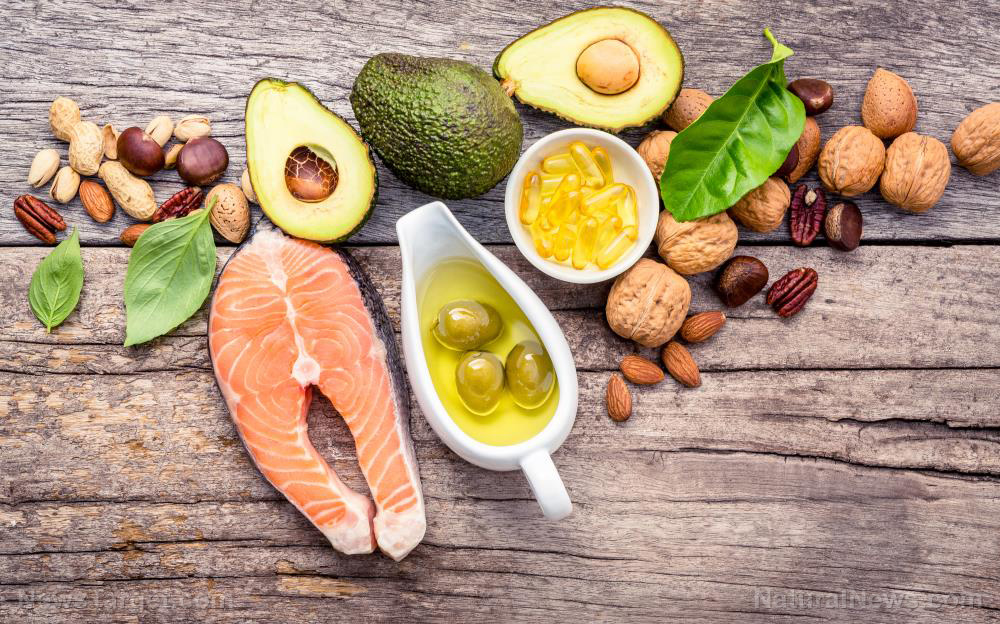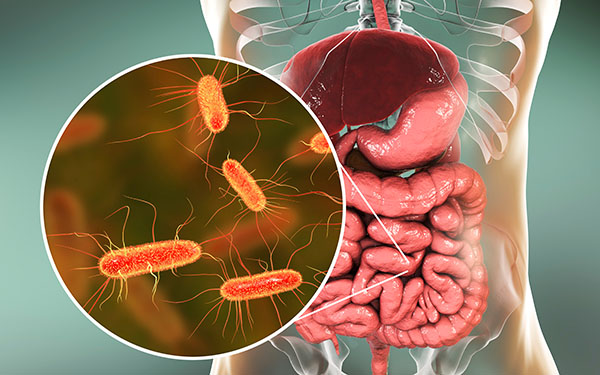Strengthen your immune system this fall with these three LIFESTYLE CHANGES
By ljdevon // 2025-08-20
Tweet
Share
Copy

The first chill of autumn doesn’t just signal pumpkin spice and crimson leaves — it’s also the opening act for cold and flu season, a time when our bodies are burdened by the excess sugar and alcohol of holiday parties, a time when we are adapting to the ever-changing weather patterns and cooping up inside without vitamin D. Yet while hand sanitizer, tamiflu, and cheap ascorbic acid supplements fly off the shelves, the most powerful tools for fortifying immunity aren’t found at the grocery store or the pharmacy. They’re woven into the rhythms of our daily lives: the depth of our sleep, the weight we lift, and the foods we choose to fuel ourselves — or avoid. New research reveals that these seemingly mundane habits don’t just support the immune system; they reshape it, turning the body into a more efficient fortress against disease.
Modern life — with its blue-light glow, processed snacks, and sedentary routines — is quietly sabotaging our natural defenses.
Key points:
- Strength training isn’t just for muscles: It supercharges blood flow, flushing pathogens out of the body while mobilizing immune cells like natural killer cells and T cells.
- Sleep is the brain’s nightshift cleaner: The glymphatic system, active only during deep sleep, sweeps away toxic proteins linked to inflammation — but artificial light disrupts this process.
- Carbs aren’t just empty calories: They trigger insulin spikes that fuel chronic inflammation, weakening immune responses over time.
- Small tweaks, outsized impact: Adjusting sleep hygiene, swapping refined carbs for whole foods, and lifting weights could slash susceptibility to infections by up to 50 percent, studies suggest.
How strength training turns blood into a pathogen-flushing river
Picture your circulatory system as a network of rivers. When you’re sedentary, those rivers move sluggishly, allowing debris — metabolic waste, bacteria, even rogue viruses — to settle along the banks. But when you strength train, your muscles act like pumps, accelerating the current. "Every contraction of a muscle squeezes the lymphatic vessels, which don’t have their own pump like blood vessels do," explains Dr. Mark Hyman, director of the Cleveland Clinic Center for Functional Medicine. "This mechanical pressure moves lymph fluid, which carries immune cells and waste products, through the body at a faster rate." The science backs this up. A 2019 study in Frontiers in Immunology found that a single session of resistance training increased the circulation of natural killer cells — immune assassins that target virus-infected cells — by up to 50 percent. Even more striking, regular strength training reduces baseline levels of cortisol, the stress hormone that, in excess, suppresses immune function and stokes inflammation. "Cortisol is like a fire alarm," says Dr. Rhonda Patrick, a biomedical scientist. "It’s useful in short bursts, but if it’s blaring constantly, the system gets exhausted." Historically, humans didn’t need to "exercise" to stay active — hunting, farming, and even daily chores demanded physical exertion. Today, the average American sits for 10 hours a day, a lifestyle that starves the lymphatic system of movement. The fix isn’t marathon gym sessions; research shows that just 20 minutes of body weight exercises (squats, push-ups, lunges) three times a week can enhance immune surveillance. The key is consistency: immune cells peak in the hours after a workout but return to baseline within 72 hours if not reignited.The dark side of light: How artificial glow hijacks your brain’s nightly detox
Long before alarm clocks, humans relied on the sun to regulate their sleep cycles. Sunset triggered melatonin production, the hormone that cues the body for repair, while sunrise shut it off. Today, we bathe in artificial light until midnight, scrolling through phones that emit blue wavelengths — precisely the spectrum that suppresses melatonin. The consequence? A glymphatic system that never gets its shift. Discovered in 2012 by neuroscientist Dr. Maiken Nedergaard, the glymphatic system is the brain’s version of a dishwasher. During deep sleep, cerebrospinal fluid rushes through neural pathways, flushing out beta-amyloid, a protein linked to Alzheimer’s, and other metabolic waste. Studies show that even one night of poor sleep increases beta-amyloid levels by 5 percent, while chronic sleep deprivation raises inflammation markers like C-reactive protein by 40 percent. The solution isn’t just more hours in bed — it’s deeper sleep. A 2020 study in Nature found that participants who wore blue-light-blocking glasses for two hours before bed increased melatonin production by 58 percent and spent 24 percent more time in restorative deep sleep. Other low-tech fixes: dimming lights at sunset, using blackout curtains, and keeping bedrooms at 65 F (the ideal temperature for melatonin release). "We’ve outsourced our circadian rhythms to technology," says sleep researcher Dr. Matthew Walker. "But our biology hasn’t evolved to handle 24/7 light exposure."The carbohydrate conundrum: How sugar and refined flour turn your immune system against you
In the 1970s, as the low-fat diet craze took hold, food manufacturers replaced fat with sugar and refined carbs to keep products palatable. The result? A national experiment in chronic inflammation. When you eat a doughnut or a bowl of pasta, your blood sugar spikes, forcing the pancreas to flood the system with insulin. Over time, this insulin resistance triggers a cascade: fat cells release pro-inflammatory cytokines, white blood cells become sluggish, and the immune system shifts into a state of low-grade alert. "Insulin isn’t just a blood sugar regulator — it’s an immune modulator," says Dr. Jason Fung, a nephrologist and author of The Obesity Code. "High insulin levels tell your body to store fat and ignore infections." A 2018 study in Cell Metabolism found that mice on a high-carb diet had 70 percent fewer virus-fighting T cells than those on a low-carb plan. Humans fare no better: data from the Nurses’ Health Study shows that women who consumed the most refined carbs had a 44 percent higher risk of developing autoimmune diseases. The fix isn’t ketosis or extreme restriction — it’s strategic swaps. Replace white bread with sprouted grains, which have a lower glycemic index, and trade sugary snacks for nuts or berries. "Fiber is the unsung hero," says Dr. David Ludwig of Harvard Medical School. "It slows digestion, preventing blood sugar spikes, and feeds gut bacteria that produce anti-inflammatory compounds." Even small changes add up: cutting just 50 grams of daily carbs (the equivalent of one soda) can reduce inflammation markers by 20% in three weeks. As cold and flu season loom, the choice isn’t between masking up or rolling the dice — it’s between passive defense and active resilience. The tools are already in your hands. You are not a victim of your environment. Sources include: SHTFPlan.com NIH.gov Neuronline.sfn.org News-Medical.netTweet
Share
Copy
Tagged Under:
inflammation processed food Whole Foods autoimmune disease melatonin insulin resistance strength training gut bacteria cortisol blue light blood flow circadian rhythm T-cells stress response deep sleep immune health sleep science natural killer cells refined carbs glymphatic system metabolic waste
You Might Also Like
RFK Jr. demands medical schools teach nutrition or face federal consequences
By Cassie B. // Share
Mark Kane unlocks the secrets to optimal digestion in his book
By Kevin Hughes // Share
Sleep loss: The hidden culprit behind weight gain and poor health
By Willow Tohi // Share
Study: Irregular sleep patterns pose serious risks for heart failure patients
By Belle Carter // Share
Recent News
Iran conducts surprise missile drills amid rising tensions with Israel
By kevinhughes // Share
Kremlin denies reports of plans to "restore Soviet influence"
By bellecarter // Share
How AI news bots are quietly reshaping public opinion
By avagrace // Share
The Unshackled Physician: A surgeon's awakening to medical tyranny
By ramontomeydw // Share











